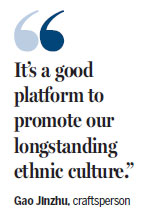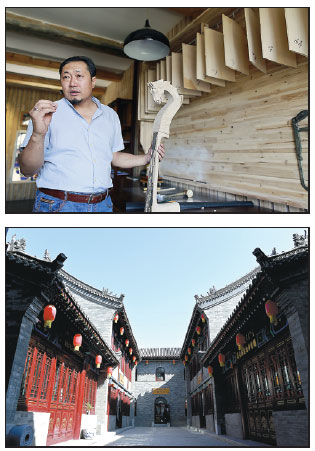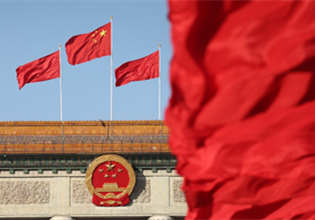New Hohhot park highlights traditions
Hohhot hopes to cash in on its historical legacy as a center of commerce and has revived its ancient trade hub as a new tourism zone.
Travelers hoping to understand the ancient legacy of what's today the capital of the Inner Mongolia autonomous region can visit the new Dashengkui Cultural Creativity Industrial Park.
Yuquan district's 8-hectare attraction vends items from its heyday along its commercial street in its south that's built according to period-style architecture. Visitors can also enjoy restaurants, coffeehouses, cross-talk performances and shows in a theater with 800 seats.
The northern area hosts four private museums, 33 ethnic handicraft studios and stores selling goods from such surrounding areas as Xilinhot.
The crown jewel of its cultural treasure trove is the Dashengkui Museum, constructed on the site of Dashengkui Trade Company. Traditional quadrangular buildings in which bosses and workers once cohabitated are today populated by displays of old bank notes, measurement instruments and brick tea.
The establishment elaborates upon the lives of the traders who trekked from such locations as Henan and Shanxi provinces to ethnically Mongolian regions in the Ming (1368-1644) and Qing (1368-1911) dynasties.
The government plans to open more ethnic and folk custom museums and offers spaces free of rent and utility fees, says Li Shali, vice-president of Yuquan district's Chinese People's Political Consultative Conference.
The Dashengkui Trade Company, which was founded at the end of the 17th century, dealt in such goods as draft animals, furs and medicine. The joint-stock company is believed to be the first in China that separated management rights and proprietorship. It also opened private banks throughout China and Russia.
Traders rode camels carrying silk and brick tea over the Yinshan Mountains, arriving in Ulan Bator and finally Russia. They also sold sheep and horses to other areas of China.
The company had more than 8,000 employees and 20,000 camels, and an annual trade volume of 500 tons silver in its heyday. An old saying goes that Dashengkui's wealth equaled half of Hohhot's.
The company's business began to decline in the 1920s, following Outer Mongolia's independence and the issuance of Soviet rubles after the October Revolution.
"The travelers caravanned along a route that's like an extension of the Silk Road that transported Chinese goods abroad," Dashengkui Museum's head Zhang Shufan says.

"Dashengkui boosted China's economic development and promoted cultural exchanges between the Han and other ethnic groups. It had enhanced national integration and unity. It's the best place to know about Hohhot."
The policy allowing artisans to work in free spaces for three years not only benefits travelers but also endangered forms of cultural heritage, such as ethnic Hezhe fish-skin clothing, Li says.
"It's a good platform to promote our longstanding ethnic culture," says 42-year-old Gao Jinzhu, who recently opened a matouqin studio in the park. The horse-head fiddle is a traditional Mongolian two-stringed instrument. It's a traditional accompaniment for the ethnic group's folk music and often provides the background sound for Mongolian throat singing, in which a single vocalist seems to produce two voices simultaneously.
"Every craftsperson can exhibit his own understanding of ethnic identity through art."
Gao left a steady bank job to make matouqin because he couldn't stand working a 9-to-5 gig. He enjoys the freedom his new livelihood affords, he says.
He typically spends two or three years making each instrument to give the wood time to season. Matouqin that are mass-produced on assembly lines are typically made with unseasoned wood, which lowers their quality, in addition to ignoring the cultural spirit of their manufacture.
While waiting, he lets the wood "listen" to different genres of music from his cellphone or music players. He believes the wood would actually listen to the music like human beings, and he thinks it's better for the wood.
|
Top: Gao Jinzhu shows off a horsehead fiddle he's making in his studio. Above: The newly opened Dashengkui Cultural Creativity Industrial Park in Hohhot. Photos By Feng Yongbin / China Daily |
(China Daily 09/14/2015 page22)



 Print
Print Mail
Mail






